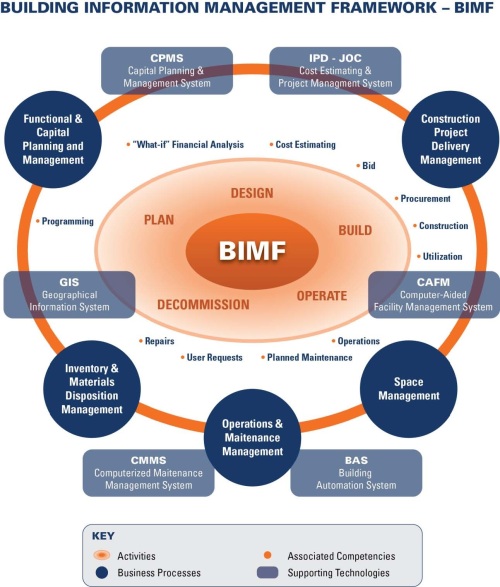Efficient life-cycle management of the built environment comes down to analyzing large data sets— big data—from several knowledge domains. 3D visualization software products currently promoted as BIM (Building Information Modeling) are not solutions for this task.
Next generation cloud-computing and knowledge-based solutions will enable new levels of innovation, productivity, collaboration, transparency, competition, and growth.
Owners, Contractors, AE’s, Facility Managers… all stakeholders of the built environment ( facilities and infrastructure) will need to integrate multimedia and social media with dedicated digital tools/applications to manage all phases of collaborative facility life-cycle management, from concept thru deconstruction.
Organizations that can best harness “Big data” in within the AECOO sector (Architecture, Engineering, Construction, Operations, Owner) will hold a distinct competitive advantage. They will be able to drive new levels of efficiency and quality with respect to planning, design, procurement, construction project delivery, utilization, repair, maintenance, sustainability, renovation, adaptation, and deconstruction.
Operative elements associate with leveraging big data for BIM (BIM defined as efficient life-cycle management of the built environment supported by digital technology) include:
– Transparency
– Collaboration
– Frequency
– Accuracy
-Evidence-based Management
-Granularity
The barriers to big-data and BIM are largely cultural vs. technology oriented, with intellectual property information/data sharing leading the list. Talent, technology, and associated processes and workflows are considerations, however, relatively trivial if big-data and BIM are supported by management.
Access to standardized and current BIM information is critical and organizations will need to integrate information from multiple data sources, often from third parties. This requires robust business processes supported by, and integrated with technology frameworks.
via http://www.4Clicks.com – Premier software for cost estimating and efficient project delivery – JOC – Job Order Contracting, SABER, SATOC, IDIQ, MATOC, MACC, POCA, BOA.



Mr. Cholakis,
Well written! I particularly like the use of the terms “Cloud Computing” and “Transparency,” and I agree that we are about to see a wave of new “Location-based” and “Social-business” innovations to support IPD & JOC contracts.